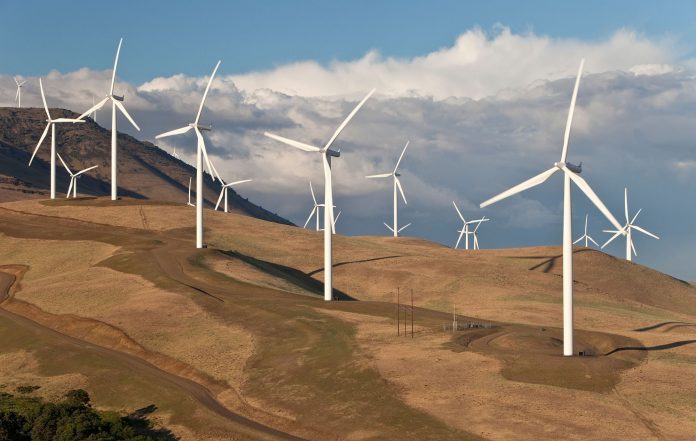Globally, the concept of grid parity has been hailed as the holy grail of the transition to renewables.
Constructing solar and wind farms whose consumer tariffs match or fall below other traditional electricity sources in the national grid without subsidies has long remained an uphill task for most economies looking to shift to green energy.
This concept is known as grid parity and has particularly been dicey to achieve with solar and wind parks among the green technologies available.
But for Kenya, that rare feat was achieved pretty effortlessly, almost the same way the East African powerhouse pulled off the mobile money success to earn the moniker Silicon Savannah.
The reason?
Kenya, and particularly the northern part, is endowed with strong and steady wind speeds as well as high sunlight intensity all year round. That’s precisely why the 310MW Lake Turkana wind power plant, the largest in Africa, sits in the northern wilderness of Marsabit while the 55MW Garissa solar station, the largest in East Africa, is in north eastern Garissa.
Electricity from the Turkana wind farm which started operating in September 2018 costs €0.0853 (Sh9) per kWh – in the same range as Kenya’s geothermal and about a third the cost of diesel/heavy fuel oil generators – Kenya’s traditional sources.
Garissa power, which came on-stream a month later, goes for $0.0549 (Sh5.49) per unit – about the same level as hydropower, yet another traditional source in the country.
The Garissa solar plant is Kenya’s first utility-scale solar project. Kenya sits along the Equator and enjoys a warm tropical climate all year round.
Because of the steady wind speeds and sunlight the country’s northern region receives, the average output level (capacity factor) in power generation is quite high by global standards, according to energy experts. This effectively positions investors to generate more electricity for sale, cutting the waiting period for them to return their equity and repay project loans. This is unlike in Europe, America and parts of Asia where capacity factors are much lower due to relatively less wind speeds and sun radiation on account of their weather patterns and geographical locations. And so investors have to charge higher to recover their costs, service debts on time and make a profit.
“It all boils down to variations in capacity factors. The capacity factor for Kenya’s Turkana wind farm is high at about 70 percent due to very good wind speeds, in Europe that drops to about 25-30 percent, less than half our output,” said Rizwan Fazal, the executive director at Lake Turkana Wind Power Ltd.
“It means a similar capacity plant with equal investment costs in Europe will generate less than half what we do, and, therefore, in order to defray the fixed upfront costs, they need to charge much higher for the generated wind electricity,” he added.
Again, most of the wind farms in Europe are offshore, planted in the sea where wind speeds are a bit steadier but whose construction is more expensive than on land.
The comparatively higher wind and solar production costs in Europe have in the past seen European governments offer investors subsidies and other incentives to pull them onto the green energy bandwagon.
Like the Turkana wind farm, the Garissa solar park has equally returned impressive yields, occasionally hitting capacity factors of about 80 per cent.
Turkana wind farm receives steady wind speeds throughout the year, making it the best location in the region for wind power harvesting.
It lies in the Turkana Corridor, a low-level jet stream from the Indian Ocean that creates strong and predictable winds at an average of 11.4 metres per second (m/s).
The wind speeds are fanned by the presence of Mt. Kulal to the North and Mt. Nyiru to the South, which acts to produce a venturi effect – accelerating the winds flowing through the project site.
The Garissa solar farm, alongside the Turkana wind power, has significantly cut the use of expensive diesel generators as cheaper alternatives during dry periods when hydropower production drops.
Though steady, the Turkana wind plant generates maximum electricity in the evenings since the area winds pick momentum during nightfall and persist throughout the night.
But despite Kenya achieving the grid parity, consumer power bills have remained stubbornly high, in what experts attribute to low demand in the economy that has seen distributor Kenya Power pay investors of idle plants for power not dispatched, mostly thermal diesel generators. Kenya’s reserve margin stands at about 30 percent, twice the average global rate, pointing to more than excess installed capacity.
Most power purchase agreements (PPAs) with independent power producers bind Kenya Power to “take or pay” the electricity, meaning that power station investors are paid even if the electricity is not taken for whatever reason.
The payouts come in form of capacity charges and deemed/curtailed charges paid for by homes and businesses through their monthly bills to cover the developers’ fixed expenses on their power project.
Read also: Safaricom Opens Talks To Supply Electricity




